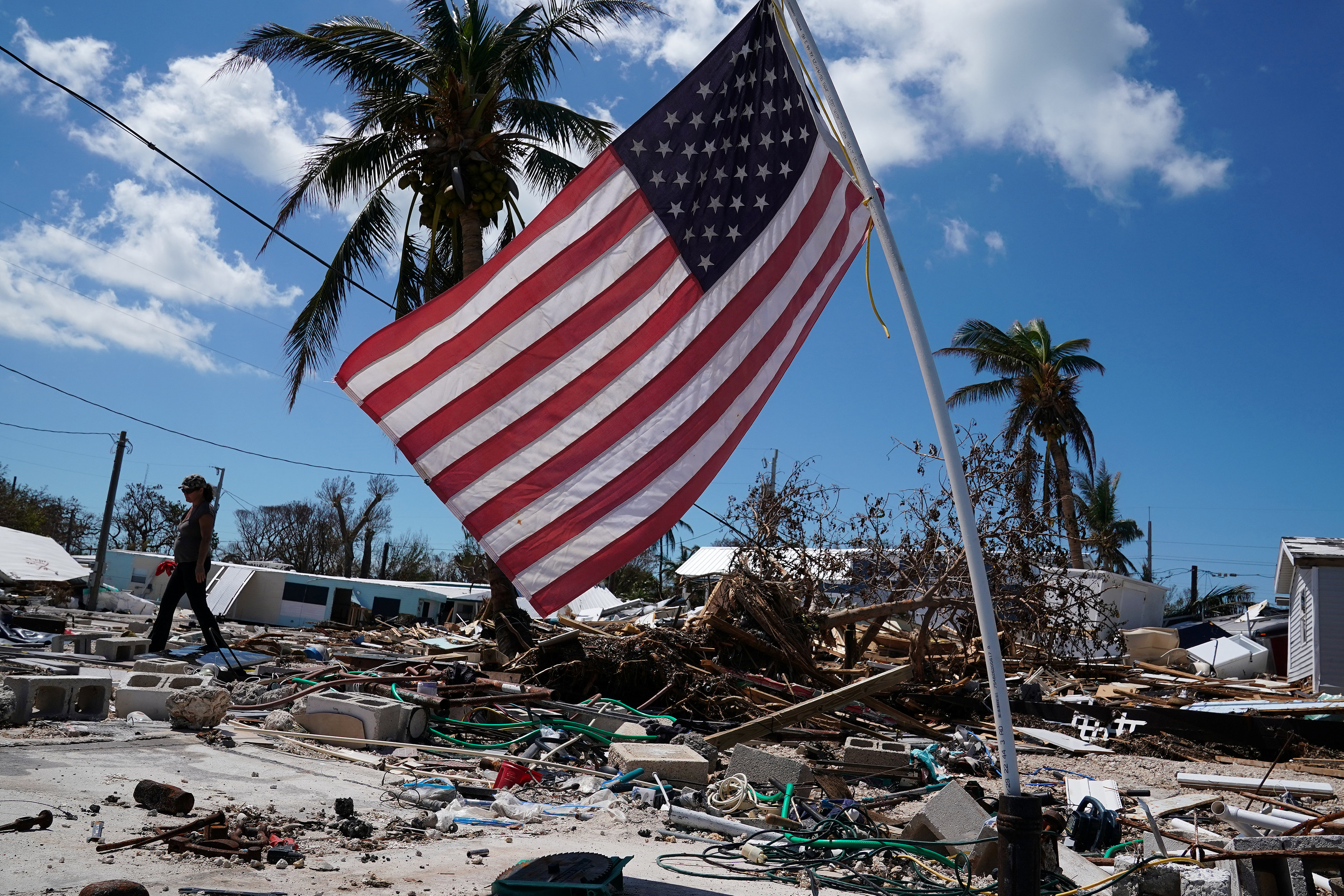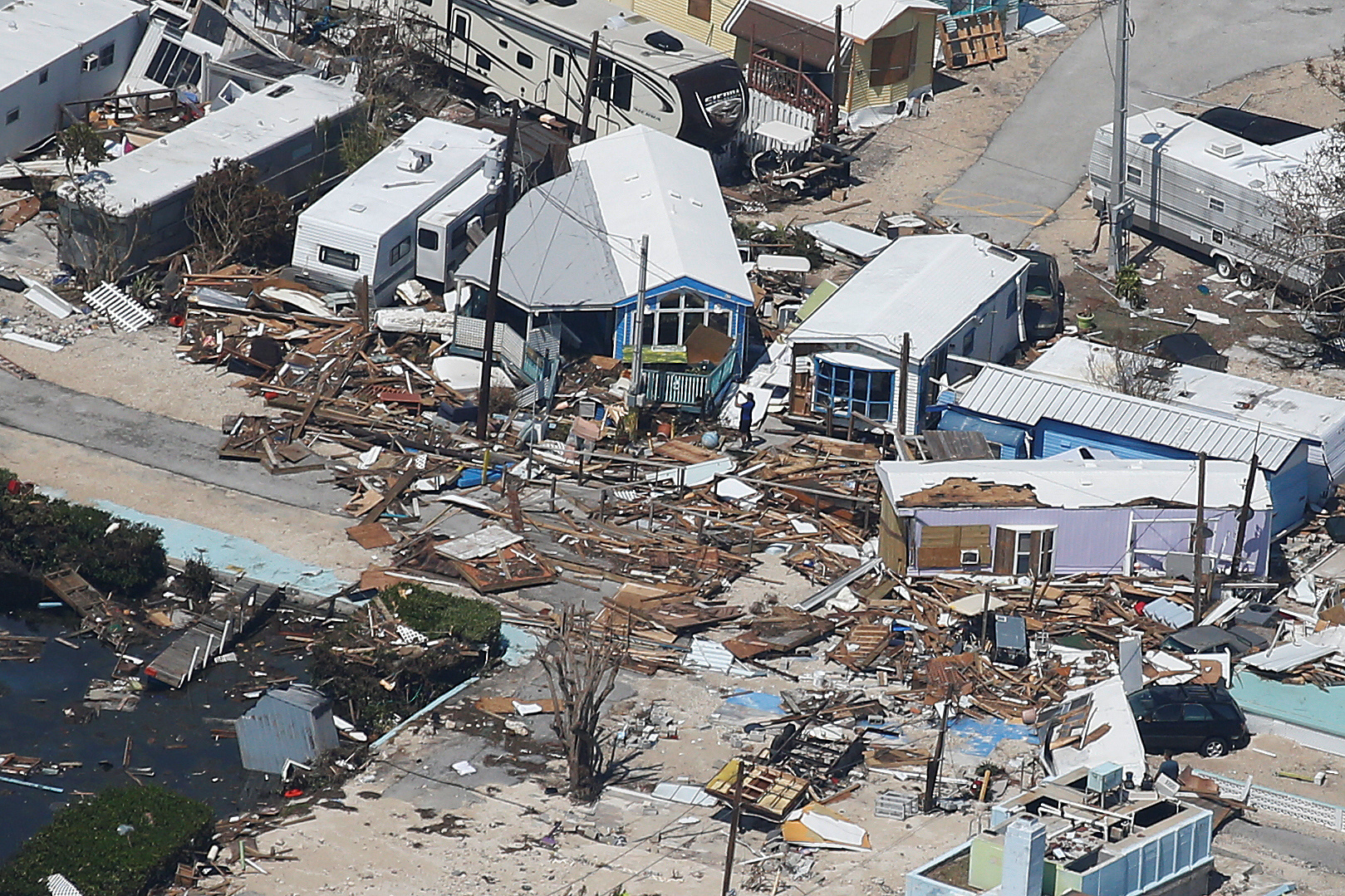
By Kami Klein
Our team from Morningside is now outside of Naples Florida, in Immokalee, one of the hardest hit communities of Hurricane Irma. With no power, lack of good drinking water and warm meals for families, the people in this community have been devastated but have gathered together as family and are working together to recover from this massive disaster.
Mondo DeLaVega, Ricky Bakker, Tammy Sue Bakker, Daina Martin are joined by our camera crew David Zorob, Hamilton Neumann and Adam Armstrong on the ground in Florida ready to help distribute the food, water bottles and the precious leatherbound MEV Bibles to people who are hurting so much. These donations would NOT have been possible without your generous donations and compassion!
Immokalee, Florida is the center of the region’s agricultural industries in Florida and home to many immigrant and migrant families who work the vast fields that produce huge amounts of fresh produce to the United States. Crops include cucumbers, bell peppers, citrus fruits and about 90% of the nation’s tomatoes that are harvested during the winter months.
The Morningside team is working with Pastor Frank Rincon of Bethel International Assemblies of God. This church has been the heart of a community that has been ravaged by Hurricane Irma. In addition to cooking and serving hot meals by the thousands, they have been responsible for distributing blankets, sleeping bags, diapers, pillows, bed sheets, coolers, T-shirts, towels, water filter kits, women’s essentials and tarps for roofs.
“Volunteers are coming in from all of the United States to help here!” said Ricky Bakker, one of the Morningside team members. “It is amazing how people are coming together to help this community!”
The Morningside truck arrived soon after the team in Immokalee. Hundreds of buckets have been unloaded and volunteers are ready to pass out 90 day buckets of food, rice, beans, dehydrated bananas, apples and milk along with water filter bottles from Seychelle to the many needy people in that community. Ricky added that the rice and beans from donations to our Disaster Relief fund can stretch 3 or 4 thousand meals to 5 or 6 thousand hot meals for the families in Immokalee and surrounding areas. “We don’t just want to bring food and water to them, we want to help offer a little bit of normal, add a little bit of comfort.”
You are the hands and feet of Jesus on the ground, and you are making a tremendous difference! The Morningside team is there representing you and spreading the love of God to people who are desperate to hear it!
Mondo said it best in a recent Facebook live post on The Jim Bakker Show Facebook page.
“Thank you for being a part of the blessing of relief for these people so hard hit by disaster! Because of your donations and faith you have given us the opportunity to serve this community! Thank you for believing in our ministry! Thank you for making this happen!”
There is so much devastation here in the world today! Hurricanes and flooding in Texas, in Florida, the Caribbean and Puerto Rico. There are thousands of homeless people in Mexico due to earthquakes. You ARE making an impact! Your gifts are saving lives and helping to rebuild communities with your love and donations. If you wish to give to our Disaster Relief and help be a part of the work that God asks of us, please give now to the Disaster Relief Fund!
Matthew 25:42-45 MEV 42 For I was hungry and you gave Me no food, I was thirsty and you gave Me no drink, 43 I was a stranger and you did not take Me in, I was naked and you did not clothe Me, I was sick and in prison and you did not visit Me.’44 “Then they also will answer Him, ‘Lord, when did we see You hungry or thirsty or a stranger or naked or sick or in prison, and did not serve You?’45 “He will answer, ‘Truly I say to you, as you did it not for one of the least of these, you did it not for Me.’
Stay tuned for more updates on our Disaster Relief Team out on the field and watch for more Facebook live reports!
















